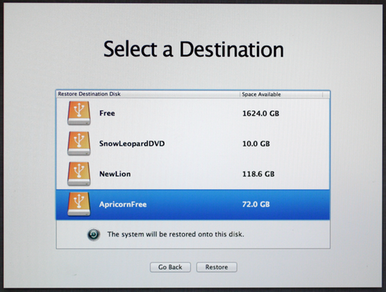Your Mac and OS X have a variety of startup keys and key combinations you can use to affect how the device starts up. Shift key, for instance, starts your Mac in Safe mode, and C (or c) starts up from a bootable CD, DVD, or thumb drive. Command-S is for 'single-user mode,' which essentially means booting to the command line.

Feb 21, 2020 Don't worry, here comes the EaseUS Mac data recovery software, which enables you to create a bootable USB drive on another Mac that works well, then, restart your Mac from it, and go ahead to recover files. Especially to restore data on system drive under macOS 10.13, it's very safe to recover from bootable media. Jan 09, 2020 One option allows the user to reload the OS X. In the case that this reload cannot be done, the menu gives the user the option to diagnose disk problems, get online help, or install the factory pre-loaded version of OS X. How To Start Up A Mac in OS X Recovery Mode. There are two ways to boot Mac in recovery mode: standard and internet based. Jun 17, 2020 Mac Recovery Mode is like a program that loads the Mac built-in recovery tool from a specific disk partition that holds the duplicate OS X installer with a recovery image. Just think about a situation when your Mac couldn’t be recovered using any other method.
The Apple Key, or the Command Key
I was personally familiar with these and several others, but it turns out there are 15 total combinations, thanks to a KnowledgeBase article Apple posted. I'm betting many of you don't know them all, either, so here they are.
The links below point to other support documents on Apple's website.

| 15 Startup Key Combinations for Mac | |
|---|---|
| Hold during startup | Description |
| Shift ⇧ | Start up in Safe Mode. |
| Option ⌥ | Start up to Startup Manager. |
| C | Start up from a bootable CD, DVD, or USB thumb drive (such as OS X install media). |
| D | Start up to either Apple Hardware Test or Apple Diagnostics, depending on which Mac you're using. |
| Option-D | Start up to either Apple Hardware Test or Apple Diagnostics over the Internet. |
| N | Start up from a compatible NetBoot server. |
| Option-N | Start up from a NetBoot server using the default boot image. |
| Command (⌘)-R | Start up from OS X Recovery. |
| Command-Option-R | Start up from OS X Recovery over the Internet. |
| Command-Option-P-R | Reset NVRAM. Release the keys after you hear the startup sound again. |
| Command-S | Start up in single-user mode. |
| T | Start up in target disk mode. |
| X | Start up from an OS X startup volume when the Mac would otherwise start up from a non-OS X startup volume. |
| Command-V | Start up in verbose mode. |
| Eject (⏏), F12, mouse button, or trackpad button | Eject removable media, such as an optical disc. |
Image courtesy of Shutterstock.
Recovery Mode Iphone
I think I found a way to solve your issue:
Recovery Mode Samsung

The command you're looking for is caffeinate. Just open a Terminal window and execute.
I just invoked the command to keep a file copy (from my previous Mac's Time Machine volume to my new system's hard drive, as opposed to its SSD) going overnight. Prior to this, I had to babysit the system to keep it from falling asleep and pausing the file copy. The true test will be whether my computer is still alive and copying an hour after I hit the Add Reply button here..I'll report back if it works/doesn't work.
I would have invoked the command-specific option of caffeinate, but the file copy has been running for awhile, so I just told my Mac to caffeinate itself for 36000 seconds (10 hours). Should be enough to cover me for this action. I imagine that you'd have to use the timed version of caffeinate for anything running through the GUI, since I haven't yet found a way to invoke, say, Disk Utility from the Terminal.
Nov 1, 2012 10:12 PM